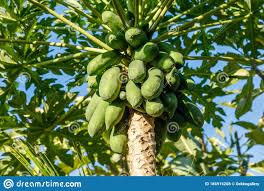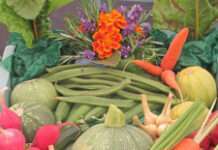ANNOUNCEMENTS
Great Plains Growers Virtual Conference
February 12 & 13, 2021
The 2021 Great Plains Growers Conference is going virtual! Stay home and avoid winter driving conditions, while sharpening your production and marketing skills. All you need is a computer and internet access.
Great Plains Growers Conference (GPGC) is a great local conference for commercial fruit, vegetable, cut flower and honey bee producers from Iowa, Kansas, Missouri, Nebraska and other midwest states providing research-based information, from both vegetable research specialists and local growers, to help your farms grow and thrive.
Due to anticipated ongoing COVID issues, the 2021 conference will be virtual! Participate on your computer from the comfort of home.
2021 Track Topics include:
*Marketing in the New Normalcy
*Tree Fruits
*Small Fruits
*Vegetable Production
*Vegetable Integrated Pest Management
*Controlled Environment Production
*Sustainable Agriculture Research and Education (SARE) Farmer Forum
For more information and to register, go to https://www.greatplainsgrowersconference.org/
FRUIT
Pawpaw Trees: A Native Fruit
Even though pawpaw is native to eastern Kansas, many people in the state have never eaten one. Fruits resemble fat bananas and are generally up to 6 inches long and as much as 3 inches wide. The taste is unique and is difficult to describe but is often said to resemble bananas or pineapple and has a texture somewhat like custard. They are rarely grown commercially because they are difficult to ship and do not store well. Ripe fruit will only hold 2 to 3 days at room temperature and up to a week under refrigeration.
Pawpaw prefers a well-drained, moderately acid (pH 5.5 to 7.0), moist soil and high organic matter content. Organic mulch is also recommended. Irrigation will be helpful to necessary depending on what part of Kansas they are grown.
In the wild, the pawpaw is an understory tree and may do better with partial shade, especially during the first 2 to 3 years. Protection from high winds is also advisable due to the large leaves. The pawpaw is a small tree that may reach 20 feet high but is less broad. Trees require cross-pollination and so at least 2 and preferably 3 different varieties should be grown. These trees are pollinated by insects other than bees such as beetles and flies and must be planted close together. Trees should be no further than 30 feet apart in order to insure good pollination.
The soil for planting should be prepared in advance of receiving the trees. Amend the soil with organic matter in the area where the trees will be planted. Do not amend just the soil from the planting hole especially if the soil is heavy and has high clay content. If you do, you have essentially made a pot that will hold water and may drown the tree. Rather add organic matter to the area in which the tree will be planted before digging the planting hole; at least a 10- by 10-foot square. You may want to treat the entire area where your trees will be planted. Add 2 inches of organic matter to the surface of the soil and then till in. The planting hole should be the same depth as the root system but 2 to 3 times as wide. Pawpaws have fleshy roots and are better planted in the spring (April) rather than fall unless container grown. Container-grown plants can be planted virtually anytime.
Keep newly planted trees well watered. The soil should be moist but not waterlogged. Keep the planting area completely free of weeds or any other type of vegetation within 3 feet of the trees. Mulching is recommended.
There has been a significant amount of work done on pawpaw by Kentucky State University. You can reach their pawpaw site at https://tinyurl.com/y3xnr8pe. Information on growing pawpaws is available from Peterson Pawpaws at http://www.petersonpawpaws.com Neil Peterson’s pawpaws are the result of over 25 years of research and have been widely tested. Though Neil no longer sells his varieties directly, he does list a number of nurseries that carry them.
The Kansas Forest Service (www.kansasforests.org ) has seedling trees available for sale though I would recommend getting named varieties instead if you wish to plant only a few trees. The fruit from named varieties will be of a higher quality than that from a seedling tree.
Named variety pawpaws are available from Stark Brothers (www.starkbros.com ) and Raintree Nursery (www.raintreenursery.com ). Also check with your local garden center for trees.
The University of Missouri has a couple of different pawpaw cultivar trials. You can find results from one of these trials at http://www.centerforagroforestry.org/pubs/pawpaws.pdf (Ward Upham)
Fruit Trees and Frost
If you are considering purchasing fruit trees this spring, there are certain factors that should be considered for some of our fruit tree species. Spring in Kansas is often unsettled with apricot and peach tree flowers being very vulnerable to late frosts that can kill fruit buds. Of course, the tree itself will be fine but there will be no to little fruit for that year. Other species of trees can also be affected but apricots and peaches are by far the most sensitive. Also, the closer a tree is to full bloom, the more sensitive it becomes to frost.
Apricots are more likely to have frost kill flowers than peaches because they bloom a bit earlier. Though there are late-blooming apricot varieties, the differences between full bloom on early and late-blooming varieties appears to be slight. Research at Virginia Tech in the 90’s showed a maximum of a 4-day difference between early and late varieties. However, in some years that may be all that is needed. The trees in the study that were considered late blooming included Hungarian Rose, Tilton and Harlayne. Harglow was not included in the study but is also considered late-blooming. See https://tinyurl.com/y35ntxau for more info.
Peaches are next on the list for being likely to be caught by a late frost. With peaches, two characteristics become important when considering whether they will be damaged. Like apricots, bloom time is very important but fruit bud hardiness should also be considered. In this case, fruit bud hardiness refers to hardiness to late frosts rather than the ability to survive extreme low temperatures during the winter. Late bloomers included ‘China Pearl’, ‘Encore’, ‘Intrepid’, and ‘Risingstar.’ See https://tinyurl.com/y35ntxau . The ‘Intrepid’ cultivar also has shown excellent cold hardiness when in flower. See http://www.google.com/patents/USPP12357
So, are there other considerations when looking at possible frost damage? Location can be very important. Planting on a hill which allows cold air to drain to lower elevations can help. Also, a location in town will be more likely to have a warmer micro-climate than an exposed location. Some gardeners will add a heat source under a tree during cold nights if they are close to a building. Heat lamps and charcoal briquettes are sometimes used but safety should be the first consideration. (Ward Upham)
TREES
Dutch Elm Disease Resistant American Elms
Our John C. Pair Horticultural Center near Wichita established a National Elm Trial in 2007 with 18 cultivars. All of these are Dutch Elm Disease (DED) Resistant with 4 being true American elms. The cultivar ‘Jefferson’ would have been a fifth true American elm but proved to be the same cultivar as ‘Princeton’. The remainder are either hybrids or other elm species. The four true American elms are ‘Valley Forge’, ‘Princeton’, ‘New Harmony’ and ‘Lewis and Clark’ (Prairie Expedition). All have shown excellent tolerance to DED. Characteristics listed below are primarily from our study at the John C. Pair Horticultural Center but storm breakage is from the University of Minnesota.
‘Valley Forge’
Survival: 100%
Crown Shape: Vase
Lacebug damage to foliage: Minimal
European elm flea weevil damage: Minimal
Storm Breakage: Fair
Comments: Strong grower, broad spreading
‘Princeton’
Survival: 100%
Crown Shape: Vase
Lacebug damage to foliage: Minimal
European elm flea weevil damage: Minimal
Storm Breakage: Fair
Comments: Impressive grower, upright habit, attractive tree
‘New Harmony’
Survival: 100%
Crown Shape: Vase and round
Lacebug damage to foliage: Significant
European elm flea weevil damage: Minimal
Storm Breakage: Not in Minnesota study
Comments: Narrow, upright habit with strong, central axis
‘Lewis and Clark’ (Prairie Expedition)
Survival: 80%
Crown Shape: Broad oval
Lacebug damage to foliage: Minimal
European elm flea weevil damage: Minimal
Storm Breakage: Good
Comments: Strong grower with broad spreading habit, some wetwood.
Storm damage can be minimized by pruning when the tree is young. Maintain a central leader but prune out all lower branches as the tree grows and branches increase in diameter so that there is room to work under the tree. Also prune out branches attached with a narrow angle as these are most likely to give way in ice or wind storms. For more information regarding the study, see https://webdoc.agsci.colostate.edu/bspm/NationalElmTrial/AUF2017.pdf For photos and information on hybrids and other species of elm, see https://webdoc.agsci.colostate.edu/bspm/ElmKansas.pdf.
(Ward Upham)
Start Trees Off Right
Research from K-State’s John C. Pair Horticultural Center has quantified the effect of controlling grasses around newly planted trees. Jason Griffin, William Reid, and Dale Bremer conducted a study to investigate the inhibition of growth of transplanted, seedling trees when lawn grasses were allowed to grow up to the trunk. There were five treatments, including three with different species of grass:
1. Bare soil maintained with herbicides.
2. Area under tree mulched 3 inches deep.
3. Tall fescue allowed to grow under tree.
4. Bermudagrass allowed to grow under tree.
5. Kentucky bluegrass allowed to grow under tree.
All treatments were applied to Eastern redbud seedlings as well as to pecan seedlings. All trees were fertilized according to recommendations and watered during the growing season with up to 1 inch of water if rainfall was deficient. At the end of two years, trees were measured and harvested. Data was taken on caliper (diameter) 6 inches above the ground, weight of aboveground portions of the tree, leaf area, and leaf weight. There were no differences in any measure between the mulched treatment and the bare soil treatment for either tree species. All measures showed significant growth increases if lawn grasses were controlled around the tree.
Results include the following:
1. Caliper: Caliper measures 6 inches above the soil surface were twice as large for plots without grass than for those with either fescue or bluegrass, but only 50% larger when compared to the bermudagrass plots.
2. Top growth weight: Redbuds showed a 300% weight advantage for plots with grasses controlled than those without. Pecans showed a significant 200% increase.
3. Leaf area and leaf weight: Leaf areas were 200% larger in plots without grass competition and leaf weight showed a 300% increase.
The obvious conclusion from this study is that grasses must be controlled under a newly transplanted tree to get the best possible growth. Though there were no differences in growth whether mulch was used or not, you may still wish to mulch for aesthetic reasons or to help control weed growth. How far from the trunk should the grasses be controlled? Try a minimum of 3 feet. (Ward Upham)
LANDSCAPING
Now is a Good Time to Design Your Landscape
The dark, cold days of winter are a good time to dream and plan for the upcoming growing season. Have you always wanted to landscape your home but didn’t know where to start? We offer a number of publications available to help you accomplish your dream. This collection includes everything from general landscaping publications such as “Residential Landscape Design,” to specific works such as “Naturalistic Landscaping” and “Low-Maintenance Landscaping.”
You can download printed publications for landscaping free of charge from http://hnr.k-state.edu/extension/publications/landscaping.html . Information on plants recommended for Kansas can be found at http://hnr.k-state.edu/extension/info-center/recommended-plants/index.html
You may also request printed copies from your local K-State Research and Extension office. There may be a small charge for printed copies of larger publications.
If you need to know how to contact your local extension office, go to http://www.ksre.ksu.edu/Map.aspx and mouse over your county. (Ward Upham)
MISCELLANEOUS
Bird Feeding
Severe winter weather is not only hard on people but can be a life and death struggle for birds. Though birds also require water and shelter, food is often the resource most lacking during cold weather. Many different bird food mixes are available because various species often prefer different grains. However, there is one seed that has more universal appeal than any other: black oil sunflower. If you are new to the bird-feeding game, make sure there is a high percentage of this seed in your mix. White proso millet is second in popularity and is the favorite of dark-eyed juncos and other sparrows as well as the red-winged blackbird.
As you become more interested in bird feeding, you may want to use more than one feeder
to attract specific species of birds. Following is a list of bird species with the grains they prefer.
– Cardinal, evening grosbeak and most finch species – sunflower seeds, all types.
– Rufous-sided towhee – white proso millet.
– Dark-eyed junco – white and red proso millet, canary seed, fine cracked corn.
– Many sparrow species – white and red proso millet.
– Bluejay – peanut kernels and sunflower seeds of all types.
– Chickadee and tufted titmouse – peanut kernels, oil (black) and black-striped sunflower
seeds.
– Red-breasted nuthatch – oil (black) and black-striped sunflower seeds.
– Brown thrasher – hulled and black-striped sunflower seeds.
– Red-winged blackbird – white and red proso millet plus German (golden) millet
– Mourning dove – oil (black) sunflower seeds, white and red proso plus German
(golden)millet.
Extended cold periods can also make water unavailable. A heated birdbath can be a
tremendous draw for birds during times when all other water is frozen. Energy use is usually less than what most people expect IF the heater has a built-in thermostat. If you would like more information, Chuck Otte, Agriculture and Natural Resources Extension Agent for Geary County has a series of backyard birding guides at http://gearycountyextension.com/NRMW.htm (Ward Upham)
Contributors: Ward Upham, Extension Associate
Division of Horticulture
1712 Claflin, 2021 Throckmorton
Manhattan, KS 66506
(785) 532-6173
For questions or further information, contact: [email protected] OR [email protected]
This newsletter is also available on the World Wide Web at:
http://hnr.k-state.edu/extension/info-center/newsletters/index.html
The web version includes color images that illustrate subjects discussed. To subscribe to this newsletter electronically, send an e-mail message to [email protected] or [email protected] listing your e-mail address in the message.
Brand names appearing in this newsletter are for product identification purposes only. No endorsement is intended, nor is criticism implied of similar products not mentioned.
K-State Research and Extension is committed to making its services, activities and programs accessible to all participants. If you have special requirements due to a physical, vision or hearing disability, or a dietary restriction please contact Extension Horticulture at (785) 532-6173.
https://hnr.k-state.edu/extension/info-center/newsletters/index.html
Blog Post: http://www.ksuhortnewsletter.org
Video of the Week: Attracting Birds to Your Backyard
https://kansashealthyyards.org/all-videos/video/attracting-birds-to-your-backyard





